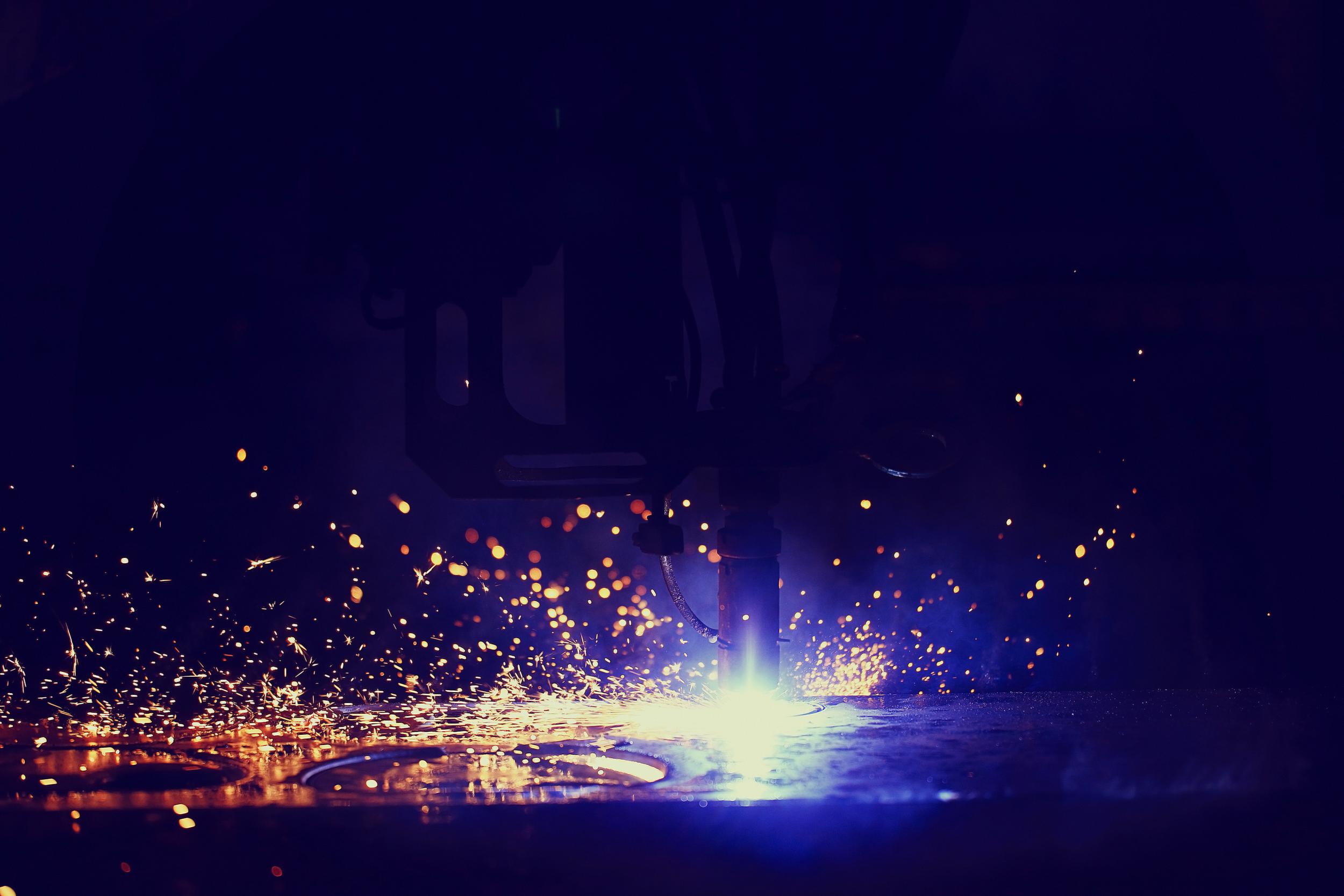RecommendMail Facebook LinkedIn
- Industry 4.0
- Digitization
Photonics is a key technology for future markets
Photonics enables pioneering technologies and offers great growth potential. With optical technologies at the heart of our business, Jenoptik is contributing to the growth of the photonics market as well as promoting various photonic applications and trends.
, Cornelia EhrlerA two-centimeter-long rod of ruby, several pieces of wire, small mirrors and a fist-sized aluminum cylinder. Two physicists illuminated this structure with a bright flash lamp that was similar to that of a camera in 1960.
This process excited the molecules of the ruby rod, and some of them emitted light particles, so-called photons. Further ruby molecules were made to vibrate in such a way that bright red light impulses were generated.
Theodore Maiman, a physician at the Hughes Research Laboratory in California, and his assistant created the first functioning laser in 1960!

By the way, the term “laser” can be traced back to the process that takes place when light pulses are generated. The word “laser” is an acronym for “light amplification by stimulated emission of radiation”.
What is taken for granted today and is now indispensable for industry, medicine and consumer electronics in particular, was an impressive invention at the time. Albert Einstein assumed as early as 1917 that it must be possible to bundle light. But it was still unclear at the time whether it would really work.
A great deal has changed since the first targeted generation of a laser beam, and over the last few years photonics has developed into one of the most important technologies of the future. Today, laser technology is an essential component of photonics, alongside optical systems, measurement technology and image processing. But what is photonics?
The power of light forms the basis of photonics, as it uses the characteristics of light and the special physical properties of light quanta (photons). Photonics focuses on the generation of optical signals, which, among other things, are used for processing, editing, transmitting and storing data and information. Here, photons take on the role of information carriers. Compared to electrons in electronic applications, photons offer higher performance as light is many times faster than electricity. The light particles are controlled by light pulses or wavelengths, while electrons are controlled by electronic signals.
Did you know that light has a multitude of special characteristics?
- Light can be focused down to the millionth part of a millimeter (nanometer).
- The highest speed that can be achieved in our universe is the speed of light (= 299,792 km per second).
- Light is thus able to revolve around the earth seven times in one second.
- Light is approximately ten times faster than electricity.
- The shortest light pulses last one attosecond – that’s a billionth part of a billionth of a second.
Trends and applications thanks to photonics
Photonics is often the basis of numerous other technologies and applications responsible for the many, sometimes rapid, changes in society, and particularly for the many megatrends associated with digitization. A wide range of industries benefit from light-based technologies, including the automotive industry, medical technology and road traffic safety. Photonics is also used in industrial equipment and mechanical engineering.
Industry experts expect photonics to grow to about 800 billion dollars by 2023 with a CAGR of 7 percent due to the numerous markets that are based on lighting technologies. Not least thanks to the “smart manufacturing” trend, particularly the market segments of lasers, detectors, sensors and imaging devices will expand over the next few years.

Photonics as a versatile key technology for medical technology and healthcare
In medical technology, the biophotonics subdivision is pioneering for science and research. Biophotonics is concerned with the application of photonic solutions in biology. The use of these technologies, for example in instruments for digital image processing, has enabled diagnostic procedures to be improved and life processes to be recorded and analyzed in true-to-life detail.
Research in areas such as live cell imaging, cytometry or molecular diagnostic procedures in particular can be supported and promoted with the aid of digital imaging solutions. Similarly, medical applications benefit from high-power diode lasers; for example for laser-based treatment methods in surgery, dentistry and ophthalmology or for hair removal devices.
Photonics increases safety in both road traffic and industrial environments
Photonics also contributes significantly to trend topics in road traffic safety. The focus here is on autonomous driving, the further development of smart cities or transformations in mobility. LIDAR (light detection and ranging) plays a key role here. Innovative sensors help, for example, vehicles to recognize obstacles, measure distances and maintain orientation within their surroundings with the aid of laser technology. The result is more security and autonomy.
Safety is crucial not only when it comes to road traffic, but also in industrial and automation processes. In these areas, for example, it is therefore important to make heat distribution and losses visible and measure temperature differences. Sensor and imaging solutions such as thermographic cameras, which enable precise thermal images using infrared technology, are used for this purpose.
Faster communication thanks to photonics
While copper used to be the medium of choice for data transmission, today it is light. Modern communication technologies rely on fiber optic cables to transfer information using photons. Here electrical signals are converted into optical signals by light-emitting diodes or laser diodes. Optical waveguides, in this case optical fibers, then transmit the data at high speed in the form of light signals.
Photonics does not only enable the optical transmission of data, but also innovative display systems, for example for virtual reality (VR). VR solutions have enabled us to digitally dive into new, software-generated worlds, with no physical contact. Head-up displays (or head-mounted displays) are used to transport users into virtual environments. Together with augmented reality (AR), which superimposes a virtual world onto the real world, this technology allows the user to interact in the new environment.
This is familiar from video games but AR goes far beyond this application, for example, in the medical sector. AR enables surgical methods to be improved and medical procedures to be performed more accurately. VR glasses have also found their place in agriculture – even in some cowsheds. Software-based VR worlds simulate that the animals are on green pastures even in wintertime, which could help to promote milk production.
Photonics as a driver for sustainability and climate protection
Not only does photonics offer more efficiency, comfort and safety, but it can also help in promoting climate and environmental protection and reducing greenhouse gas emissions.
Already today, 1.1 billion tons of CO2 has been able to be saved by using light-based technologies; this figure could reach three billion tonnes by 2030, according to the “Light as the key to global sustainability” photonics study, which was published in 2019 by the German industry association Spectaris and Photonics21.

About Cornelia Ehrler
Cornelia Ehrler has been working in Jenoptik’s Corporate Communications since 2010, primarily for external communications and initiatives which help Jenoptik develop into a focused photonics group. Additionally, she supports Jenoptik's Smart Mobility Solutions division in communicating orders and projects relating to road traffic safety. A graduate in English Studies, she has a penchant for English literature and culture, particularly from the Celtic Fringe.






